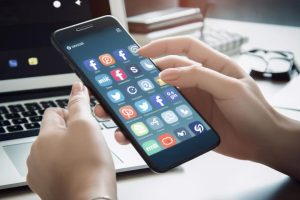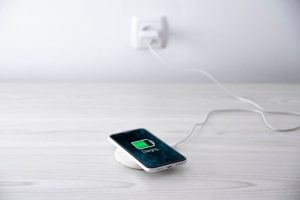
The cell phone is particularly important to prove your health status in the corona pandemic. It is annoying when it uses up more battery due to the weather and suddenly goes out. We’ll show you how your cell battery will run as long as possible in winter.
Our life is closely linked to technology – especially in the times of Corona.
We currently need our cell phones for everyday functions, such as making appointments, calculating routes, finding opening times, or paying and presenting test or vaccination certificates.
We rely heavily on this technology – unfortunately, it doesn’t keep our cell phones from giving up at the most inopportune times.
Shorter Battery Life In The Cold
Especially when it is uncomfortable outside, the mobile phone does not work as we imagine: the battery lasts less than half as long with the same use. It simply goes out even though it still has a battery and the display reacts with a delay or not at all.
At low temperatures, cell phones are also exposed to the cold. The cold makes the electrolyte liquid tougher, increasing the resistance in the cell phone. The electrochemical processes in the cell phone slow down and require more battery.
It is therefore advisable to protect the cell phone from sub-zero temperatures.
Also Read: Portable Chargers-Practical Help For On The Go
Fully Charged Switched Off
Another observation that we can often make in winter: Although the cell phone still has enough battery, it suddenly goes out.
While this can be annoying, it is a helpful feature. This emergency shutdown is used when the cold could lead to a voltage breakdown in the cell phone. To avoid possible damage to the battery, the mobile switches off beforehand, and you can continue to use it undamaged.
Note: After an emergency shutdown, you should only switch the mobile phone on again after 30 minutes and make sure it has reached normal temperature.
The Touchscreen Does Not Respond
The cell phone is prone to cold; this also applies to the touchscreen. The touchscreen works with the help of tiny detectors under the screen. They can pick up electrical particles. By placing our finger on it, the number of particles increases for a moment, which in turn is measured.
Here, too, the processes are slowed down, and there are delays in the transmission. Patience is a virtue here again.
The screen does not react often wrongly attributed to cold fingers. However, it is only a coincidence that our cell phone reacts badly when our fingers are cold. In most cases, the cell phone is also cold. The touchscreen does not react to heat but the electrical particles in our skin.
However, for the screen to work, there has to be direct contact: This is why the screens cannot be operated with ordinary gloves. Touchscreen gloves are available to keep your hands warm when using a mobile phone.
Protect Your Cell Phone From The Cold
Our cell phone has protective devices to don’t break in the cold. Nevertheless, it makes sense to keep the cell phone warm so that you can use it longer.
We have a few tips for you on how to protect your cell from the cold:
- Cell phone cases can protect your cell phone from the cold.
- It also makes sense to carry it in a warm jacket pocket, for example, in the inside pocket.
- So that you don’t have to take off your gloves every time you use them, it is worth investing in touchscreen gloves. Telephone calls can be made via headphones without exposing the cell phone to the cold for a long time.
- Some apps consume a lot of energy – to save battery, you can uninstall unnecessary power guzzlers.






